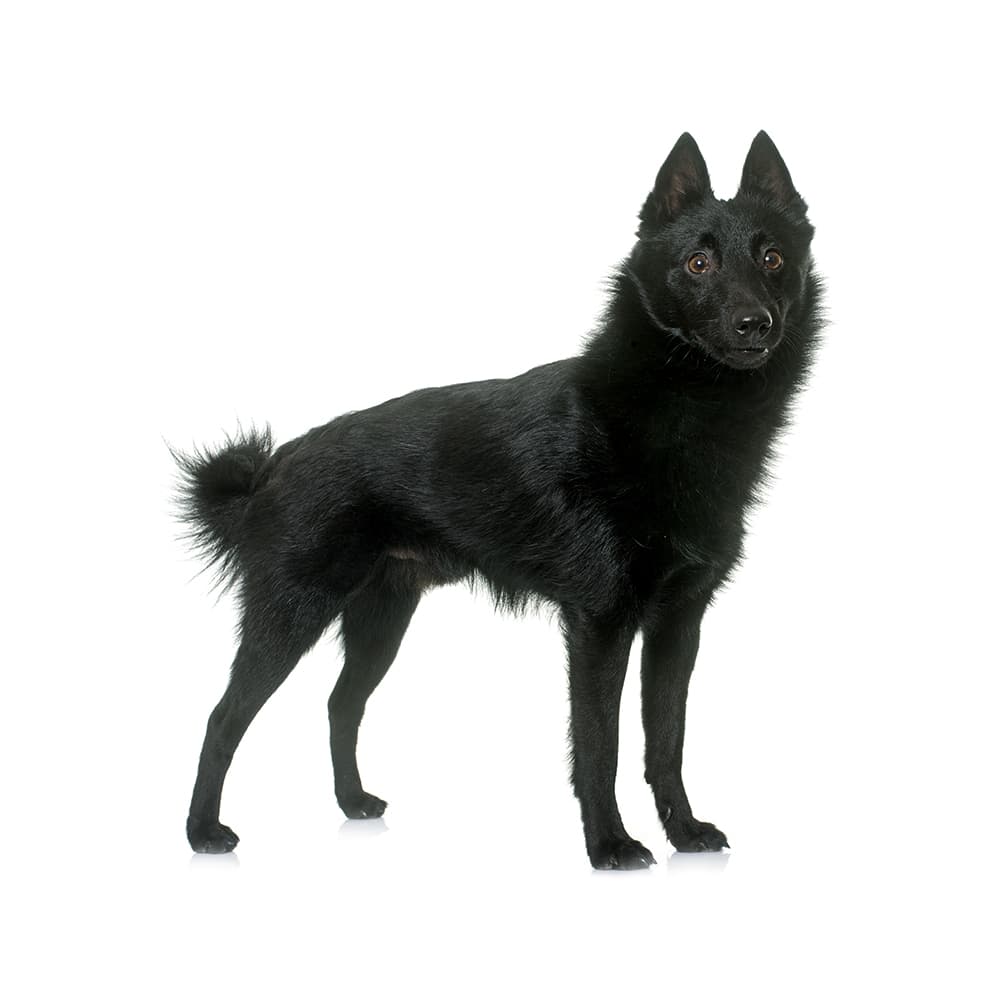Discover your dog's connection to this breed and 200+ others



Discover your dog's connection to this breed and 200+ others


The Schipperke hails from Belgium in late medieval times, where it was bred primarily for its abilities as a watchdog and ratter on canal boats. Its name, pronounced "SKIP-er-key," means "little shepherd" in Flemish. The breed was first officially recognized by the Belgian Kennel Club in 1888. Although it was initially bred to guard barges, the Schipperke quickly found favor as a companion dog, thanks to its lively personality and diligent work ethic.
The Schipperke is generally a healthy breed, though it can be prone to certain health issues, such as hip dysplasia, eye problems like progressive retinal atrophy (PRA), and a rare genetic mutation known as mucopolysaccharidosis (type IIIB). They may also be susceptible to Legg-Calve-Perthes disease (LCPD), epilepsy, hypothyroidism, entropion, and distichiasis.
Schipperkes are known for their energetic, curious, and alert nature. They are confident, independent dogs with a strong instinct to guard their family and property. While they can be a bit reserved around strangers, they are generally very affectionate with their family. Despite their small size, they require plenty of mental and physical stimulation due to their working dog heritage.
A canine genetic lineage is a group of individuals or entire breeds that descended from common ancestors predating modern breed formation. Often these lineages are associated with a ‘type’ of dog with a unique historical working role and associated behaviors (e.g., herding, scent hunting, etc.).
Spitz and Sled Dogs originate in the Arctic and subarctic regions which caused them the develop adaptations to cold climates. Some of these adaptations give rise to characteristics of the lineage, most notably a dense double coat that helps with insulation. The lineage of these dogs can be followed back to ancient breeds developed by Indigenous people. These ancient breeds were used as an aid for transportation, herding, guarding, and hunting. These jobs have created dogs that are independent, intelligent and have strong work ethics as well as a sturdy body that helps them to pull sleds or go on long journeys over rough terrain.
Example breeds with ancestry from this lineage include Akita, Chow Chow, and Siberian Husky.
Schipperkes were originally bred to hunt rats and other small vermin, which is why they're often called "little black devils" due to their energetic, almost tireless nature.
Their fox-like face and small, pointed ears give them a mischievous expression that many owners find endearing.
Traditionally, their tails were docked, giving them a distinctive "rumpless" appearance. However, tail docking is becoming less common and is illegal in some places.
They are known for their “mane” of longer hair around the neck, the “jabot” on the chest, and “culottes” on the rear thighs.
https://www.akc.org/dog-breeds/schipperke/
https://www.fci.be/en/nomenclature/SCHIPPERKE-83.html
https://www.ukcdogs.com/Schipperke
Recommended by top vets with decades of experience
21 breeds
64 genetic health markers
50 genetic trait markers
